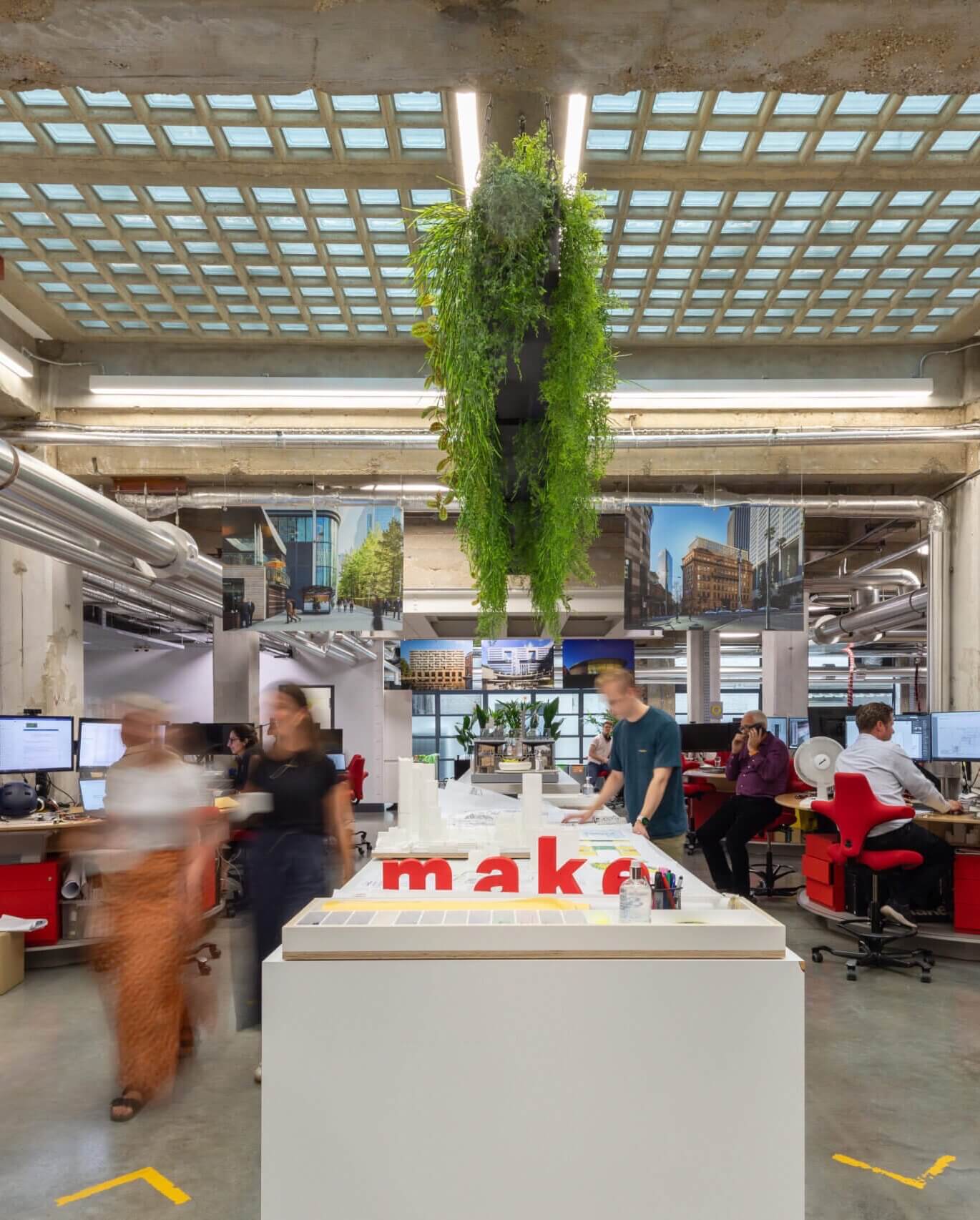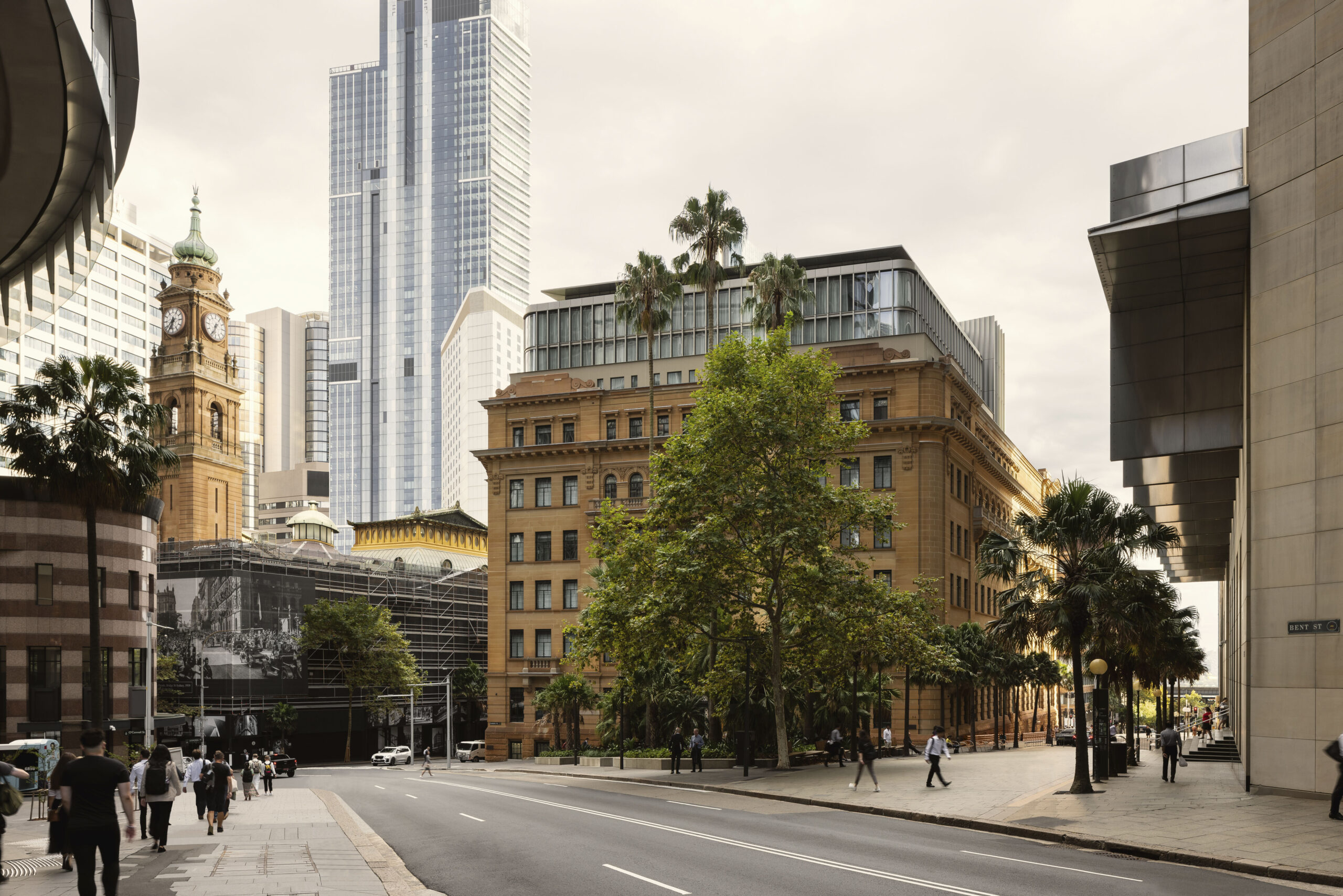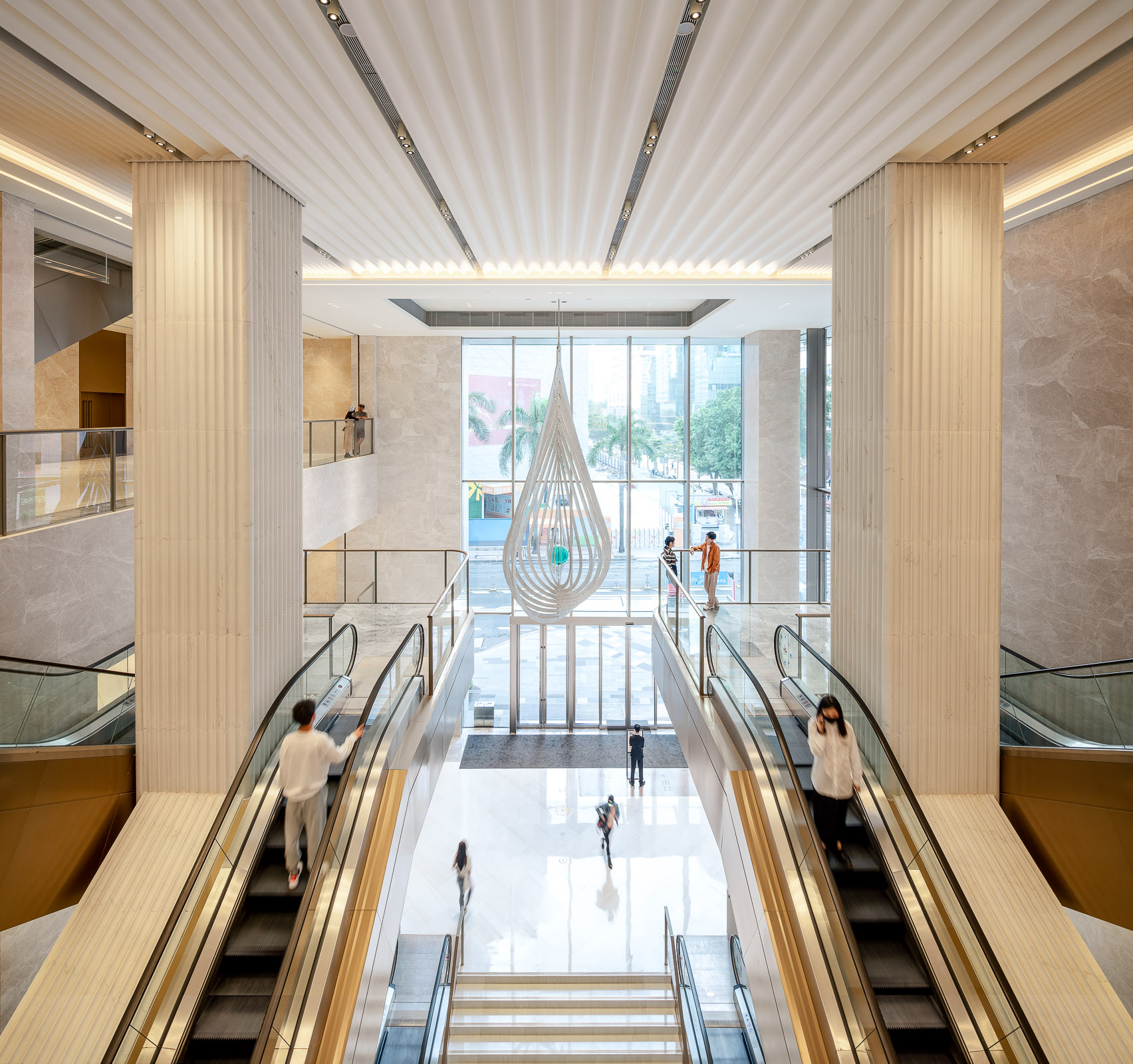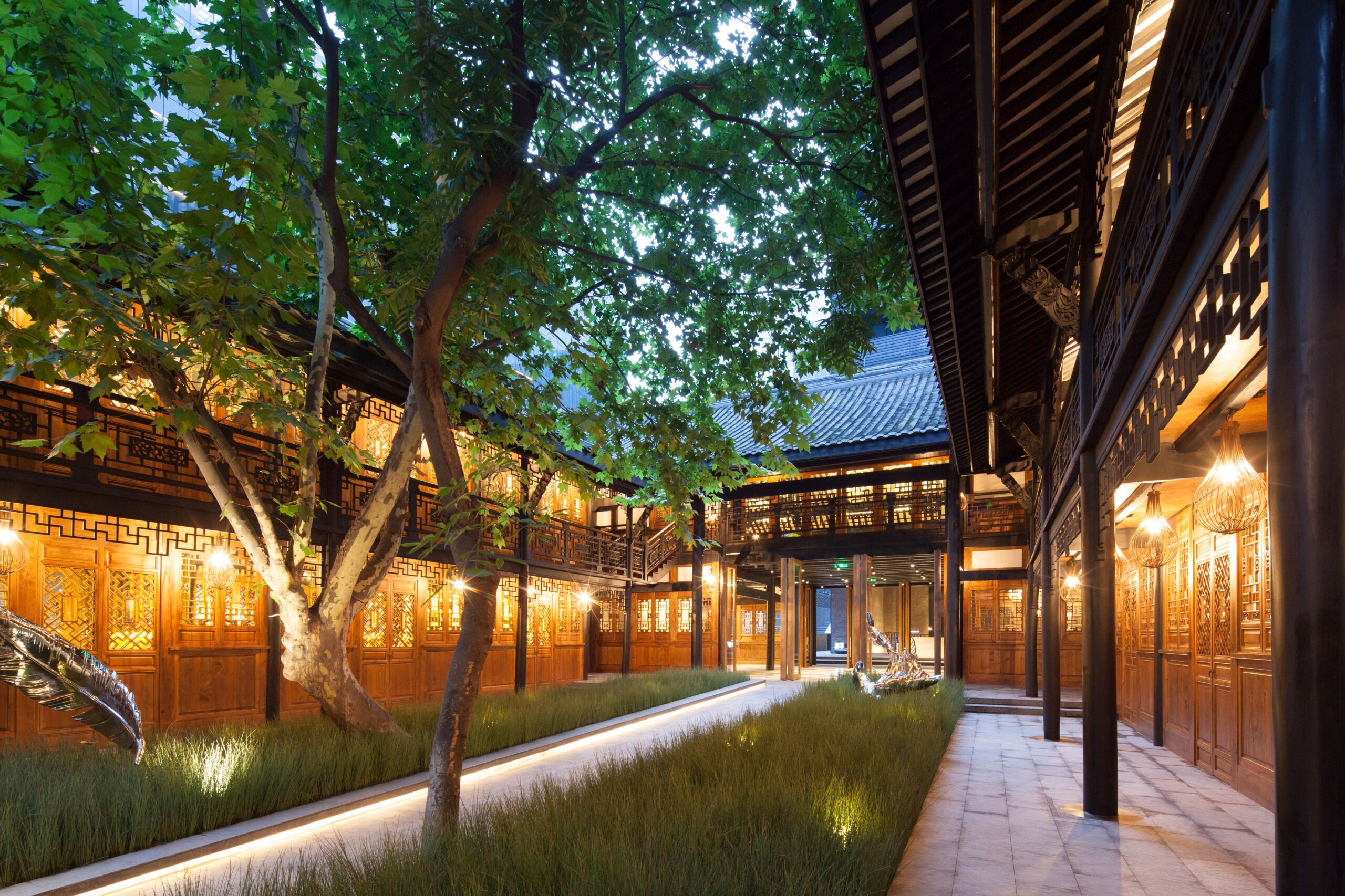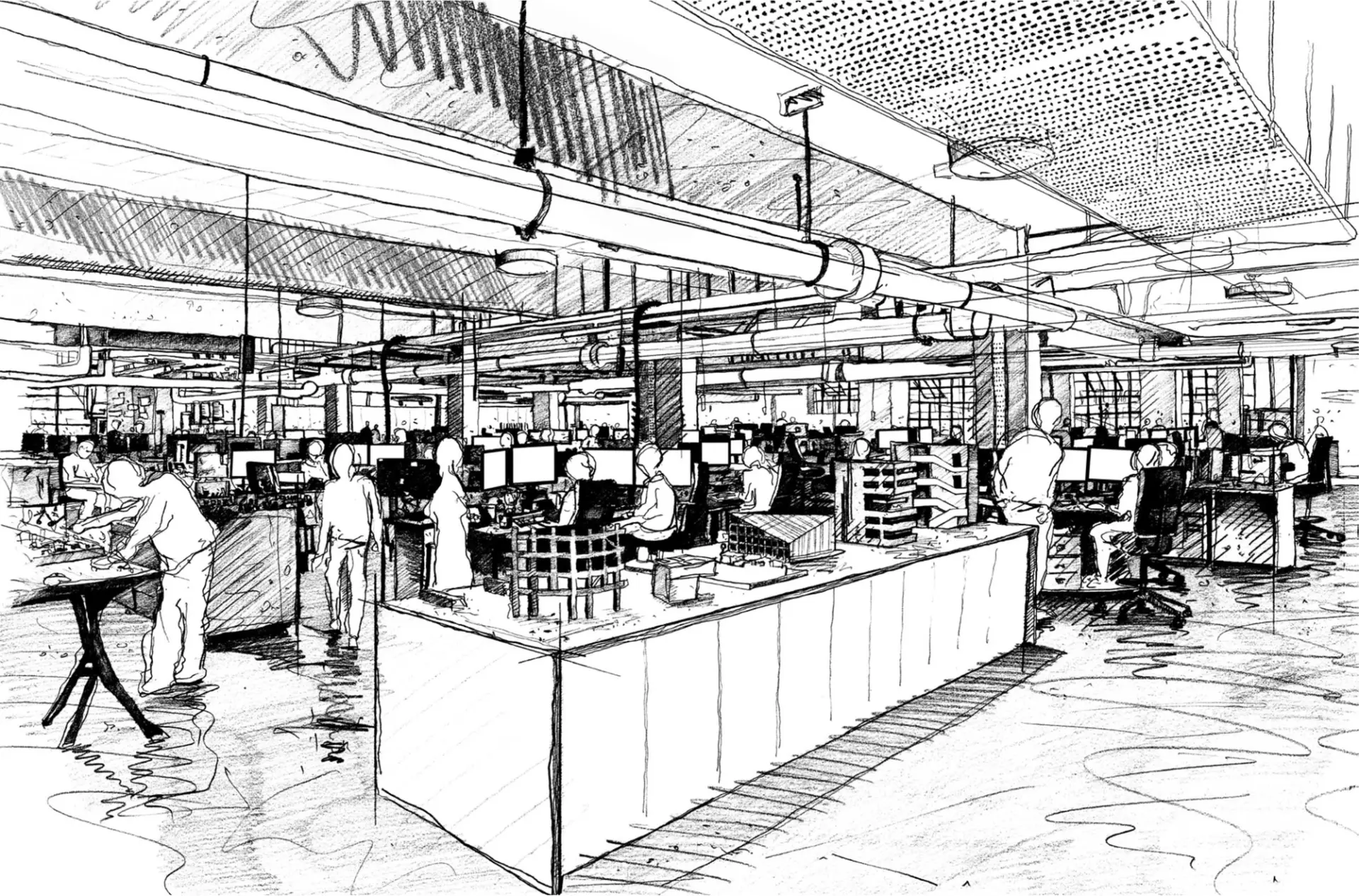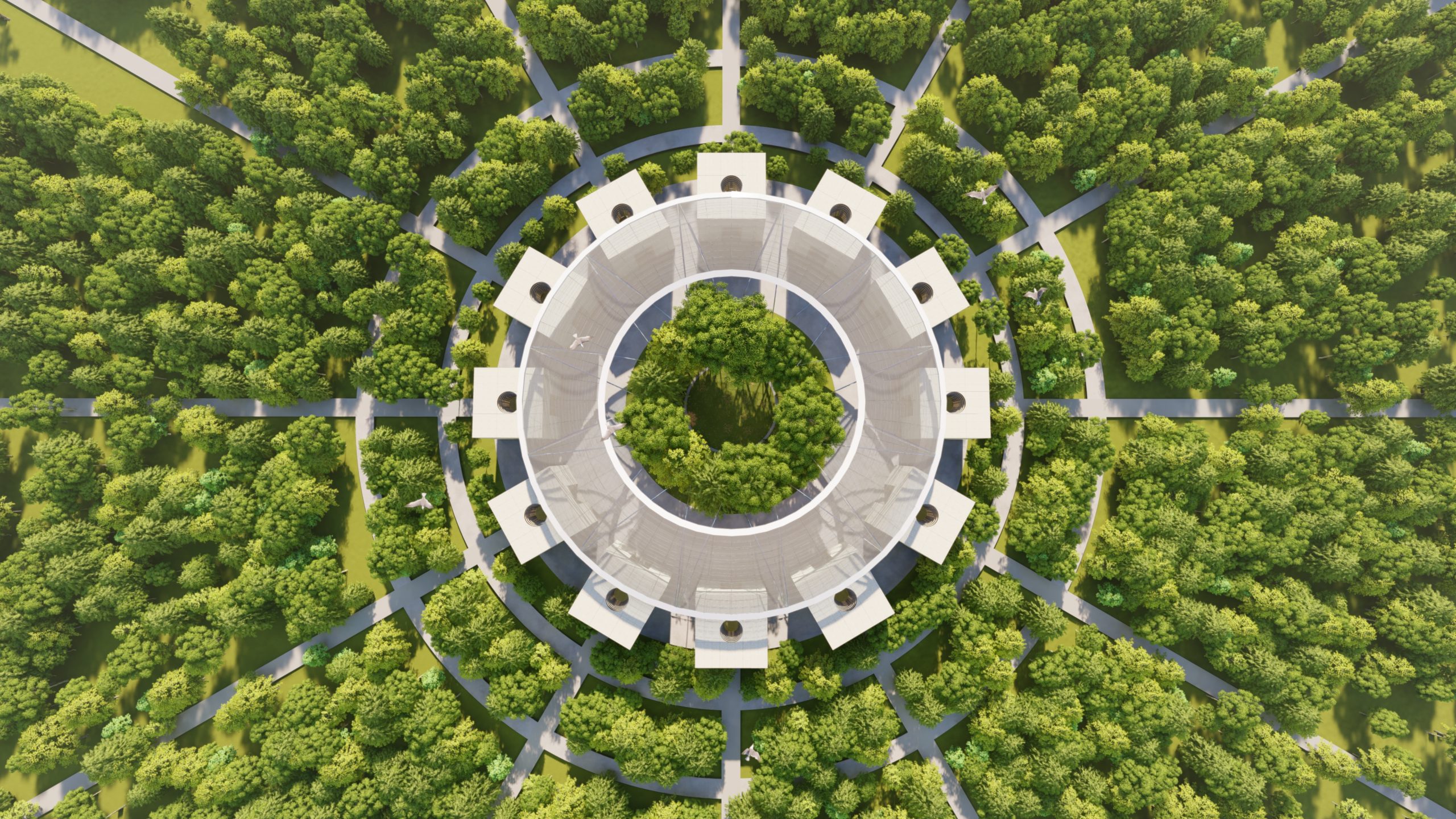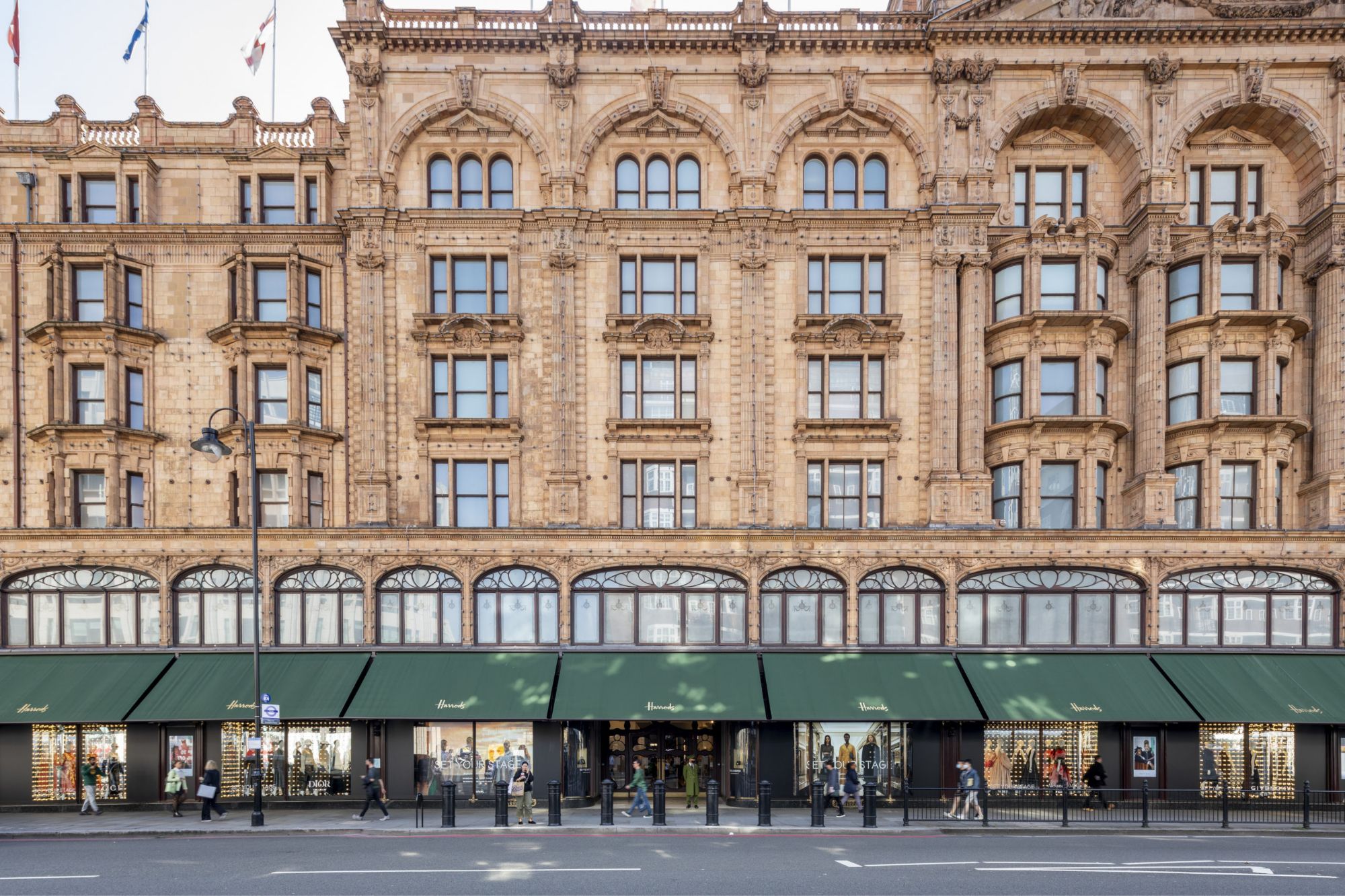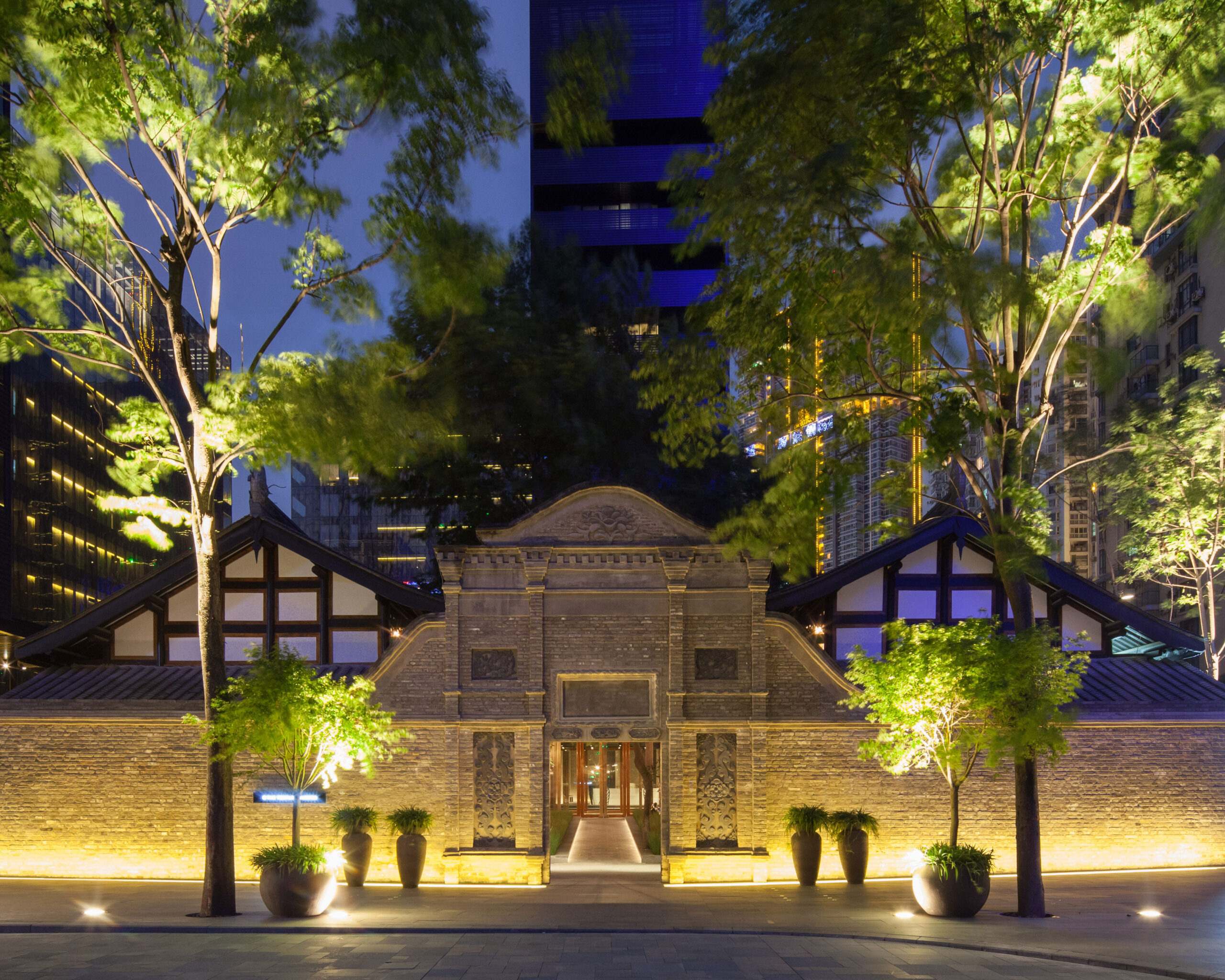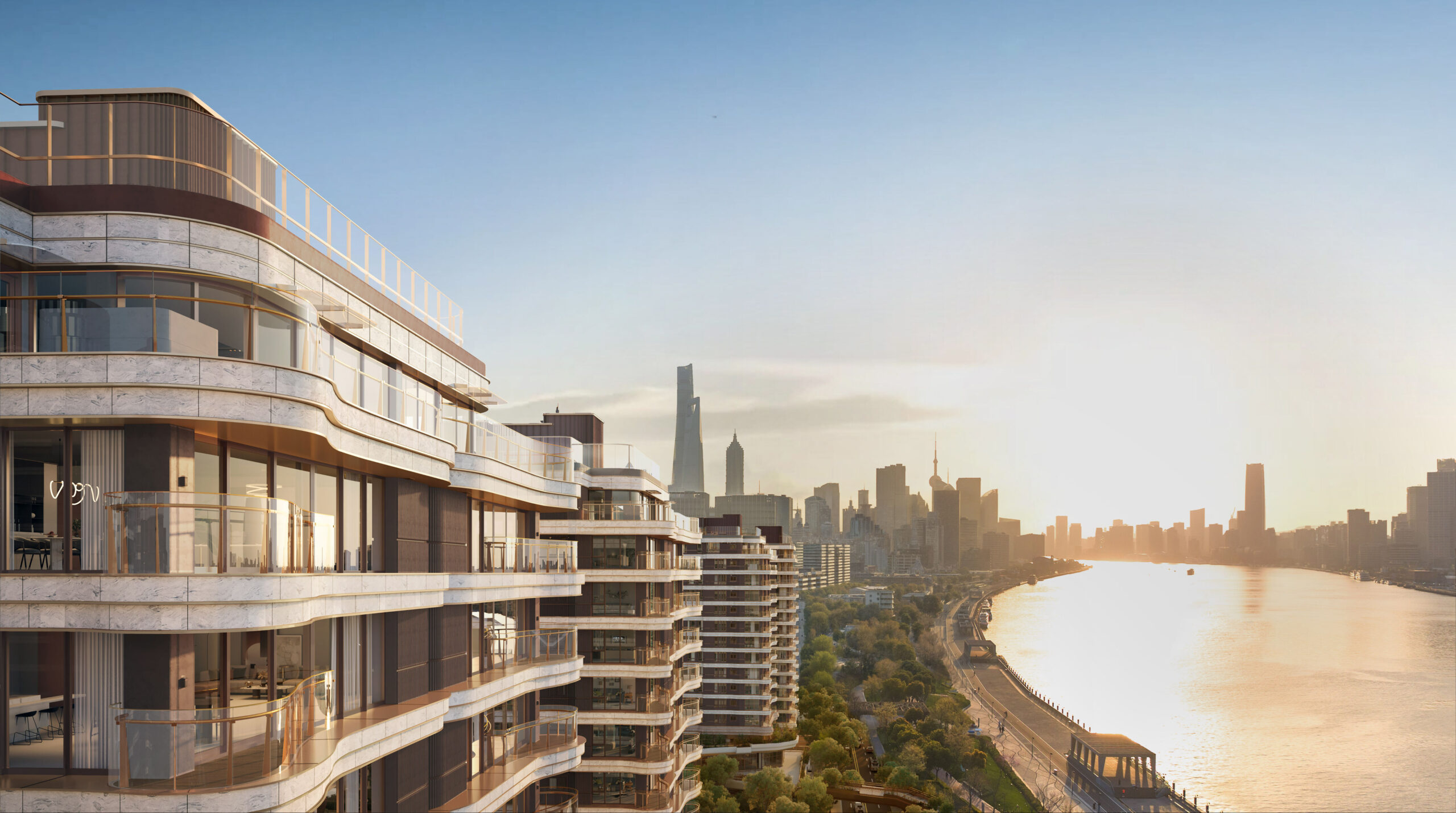













































































































































































































































- 探索:Make的摩天楼群
- Make models: Carlisle Health and Wellbeing Centre
- “Drawing as a method of dialogical design” – an interview with Eugene Tan
- Winner of The Architecture Drawing Prize 2023: an interview with Eldry John Infante
- AI integration at Make: shaping the future of architecture
- Optimising the value of build-to-rent
- Make models: Station Row section model
- Make models: Drum
- Make models: Milton Avenue/Station Row
- 零售设计与酒店设计跨界
- Defining a sustainable workplace – the BCO’s climate emergency challenge
- Discussing exhibitions with Dr Erin McKellar, Assistant Curator (Exhibitions), Sir John Soane’s Museum
- “Spirit is pure, so that’s what I feel here.” – Aunty Margret
- Make models: Seymour Centre
- Hydrogen: Solution or ‘Techcrastination’?
- Q&A with Maker Michelle Evans, project lead on Capella Sydney
- Carbon goggles: looking for facades of the future by reflecting on facades of our past
- Winning the 2022 Architecture Drawing Prize
- Make 模型: 购物中心立面设计竞赛
- Make models: Salford Rise
- Variety in urban living: setting the scene
- Variety in urban living: the challenges and opportunities
- Wilding the City
- Make models: 20 and 22 Ropemaker Street gift models
- Variety in urban living: innovation is key
- 设计再生旅行
- Make models: Jersey South Hill
- Reflections on Make Neutral Day 2023: Part 1
- Reflections on Make Neutral Day 2023: Part 2
- “Let’s do something a bit different”
- A deep dive into an amazing ‘Wunderkammer’
- “My first subject was a house. From then on, I started developing my drawing skills.”
- 《山之境》
- Make models: Brookfield Place Sydney
- Make models: community library model
- “I’ve wanted to be an architect since I was four years old.”
- “I’m learning that architectural designs will need to work in the real world.”
- Make–ReMake
- Embodied carbon of transportation
- From listed buildings to 21st-century schools [2/2]
- Drawing Sydney
- Inspired by “art built” – an interview with Marc Brousse
- Embodied carbon in curtain walls
- Reducing embodied carbon isn’t all about materials
- “Tall buildings mesmerise me.”
- The town centre in five years’ time: Community [1/3]
- Make models: metal etching
- “I’m the first one in my family pursuing architecture.”
- “What can you see behind this building?” – an interview with Fe
- My next getaway
- The town centre in five years’ time: Wellbeing [2/3]
- Make models: 80 Charlotte Street
- 生机建筑:都市森林
- “I want to build things that will explore new depths of the sea.”
- Upfront carbon: how good is good enough?
- The town centre in five years’ time: For everyone [3/3]
- Winner of The Architecture Drawing Prize 2020 – an interview with Clement Laurencio
- Restoring Hornsey Town Hall’s clocks
- A Proposed Hierarchy for Embodied Carbon Reduction in Facades
- From listed buildings to 21st-century schools [1/2]
- Comparing embodied carbon in facade systems
- Building Natural Connections with Energy, People, Buildings
- Designing in the wake of coronavirus
- Musings on The Architecture Drawing Prize 2020
- Living employment
- Bridging the gap
- Stephen Wiltshire
- International Women’s Day 2020
- Inspiring Girls
- Post COVID-19 – What’s next for higher education design?
- Four ways residential design might change after COVID-19
- Make models: The Cube
- One Make
- Atlas – Tech City statement
- Architectural Drawing: States of Becoming
- The Architecture Drawing Prize exhibition reviewed
- ‘Architecture in the frame’ – London Art Fair
- The future of retail and workplace
- Post-COVID
- A Hong Kong perspective on a post COVID-19 society
- Chadstone Link: Making new connections
- Design narratives and community bonds
- Behind the scenes at the 2019 World Architecture Festival
- Drawing on the culture that makes the buildings
- Future modelmakers 2020
- After coronavirus, how can we accelerate change in workplace design to improve connection and wellbeing?
- Improving social ties in our cities
- Q&A with our student modelmakers: Theodore Polwarth
- Q&A with our student modelmakers: James Picot
- The Teaching and Learning Building model by James Picot
- The City is Yours
- Pablo Bronstein
- Encouraging spaces of conviviality
- The importance and passion of heritage in the built environment
- No show, so what next?
- The Madison model by Theodore Polwarth
- Choosing architectural modelmaking
- The Big Data Institute model by Finlay Whitfield
- Q&A with our student modelmakers: Finlay Whitfield
- World Heritage Day 2020
- Make models: Agora Budapest
- Drawing in Architecture
- Draw in order to see
- Our commitment to sustainable design
- Asta House – Local living in Fitzrovia
- Project delivery at 80 Charlotte Street
- Make models: Chadstone Link
- Langlands and Bell – Observing and Observed
- Telling Stories: The power of drawing to change our cities
- What role will hotels play in our society after COVID?
- Sketchbooks: draw like nobody’s watching
- Transparency and a sense of investment
- Honest, in-depth learning
- Leaving a mark
- The hand does not draw superfluous things
- Make models: 20 Ropemaker Street, part 2
- Balance
- The value of the drawing
- Museum for Architectural Drawing, Berlin
- Prized hand-drawings return a building to an organically conceived whole
- Drawing details – technical and poetic
- Draw to Make
- Living with loneliness
- Betts Project
- An update from Sydney
- Combating loneliness in the built environment
- Make models: 20 Ropemaker Street, part 3
- Sydney born and razed
- Make models: 20 Ropemaker Street, part 1
- Architecture and Creativity
- Retail innovation beyond the shop door: Lessons from the USA (part 3)
- Retail innovation beyond the shop door: Lessons from the USA (part 2)
- Retail innovation beyond the shop door: Lessons from the USA (part 1)
- Drawing to an end?
- High-density living in Hong Kong
- Make’s past, present and future
- The Architecture Drawing Prize – Not just another competition
- Community connections
- My time with the BCO
- The call of the wild
- The art of an art historian
- Mary, queen of hotels
- Make models: Portsoken Pavilion
- The Make Charter
- Make models: LSQ London
- Disappearing Here – On perspective and other kinds of space
- Why Brexit will see a glass half-full emptied
- Drawing and thinking
- Make models: Grosvenor Waterside
- The Hollow Man: poetry of drawing
- Above and beyond
- Making shops exciting again: Lessons from the Nordics (part 1)
- Making shops exciting again: Lessons from the Nordics (part 2)
- Plein air in the digital age
- A “Plan in Impossible Perspective”
- Making shops exciting again: Lessons from the Nordics (part 3)
- The future of bespoke HQs
- World-class architecture
- Make models: The Luna
- Drawing architecture
- The future is bright but not the same
- Art Editor’s picks
- Employee ownership
- The tools of drawing
- Trecento re-enactment
- The Architecture Drawing Prize exhibition review
- Lessons on future office design from Asia Pacific
- The human office
- How drawing made architecture
- Advocating sustainable facade design
- Make models: FC Barcelona’s Nou Palau Blaugrana
- Drawing as an architect’s tool
- Are you VReady?
- Cycle design for the workplace
- The Architecture Drawing Prize
- Make models: an urban rail station
- Reporting from Berlin
- City-making and Sadiq
- Hand-drawing, the digital (and the archive)
- Ken Shuttleworth on drawing
- The green tiger
- Stefan Davidovici – green Mars architect
- When drawing becomes architecture
- Make models: Swindon Museum and Art Gallery
- The role of the concept sketch
- Make calls for a cultural shift in industry’s approach to fire safety
- 2036: A floor space odyssey
- Harold on tour
- London refocused
- Hotels by Make
- Full court press
- Digital Danube
- Don’t take a pop at POPS
- The future of architecture – Matthew Bugg
- The future of architecture – Jet Chu
- The future of architecture – Robert Lunn
- The future of architecture – David Patterson
- The future of architecture – Rebecca Woffenden
- The future of architecture – Katy Ghahremani
- Safer streets for all
- The importance of post-occupancy evaluation for our future built environment
- Put a lid on it
- Designing for a liveable city
- The future of architecture – Bill Webb
- Bricks – not just for house builders
- Designing in the City of Westminster
- Rolled gold
- How to make a fine suit
- Responsible sourcing starts with design
- Is off-site manufacture the answer?
- Developing a design for the facade of 7-10 Hanover Square
- Curious Sir Christopher Wren
- Responsible resourcing should be an integral part of every project
- The socio-economic value of people-focused cities

The build-to-rent (BTR) sector is expanding, and developers are keen to understand where the opportunities lie in order to align their product with local preferences and market conditions. Make believes regardless of location, the hidden value of BTR lies in long-term ‘sticky tenants’.
Established BTR operators are familiar with the cost of high turnover in rental units. Replacing tenants is one of the primary cost drivers for operators. The ongoing expenses of short-term vacancies, including marketing, redecorating, can significantly reduce margins on a BTR operational model. The BTR market has expanded from the highly mobile young professional audience it was initially targeted towards to also cater for alternative, more stable markets with greater potential to become long-term tenants.
Understanding the needs of residents is key to retaining them long term, as is building trusted and compelling brands. Developers need to be nimble in adapting their models as they learn what residents will pay and stay for.

Amenity versus service
Building and operating on-site amenities comes with significant costs, including staffing. Therefore, balancing the delivery of an exceptional resident experience with cost-effective rents is a challenge.
Initially, BTR operators thought residents were making a ‘lifestyle choice’, so they invested in generous amenities. However, it’s now emerging that life’s daily necessities, such as storage solutions, rather than luxuries, are becoming a primary driver. People still aspire to eventually own a home, so in the meantime, they aim to save money and keep their rent reasonable while benefiting from the flexibility and simplicity of renting. This is leading to changes in thinking about amenity, with operators focusing on the amenities residents genuinely use. Much like the hospitality industry, build-to-rent is an operations-driven model. The product is the service, and service is the differentiator. By understanding what tenants need and focusing on services and the experience provided, BTR operators can create a unique and desirable product.
The BTR industry is now recalibrating, with more operators listening and providing services and experiences that meet needs and simplify or reduce living costs. Services like pet care, package handling, storage solutions, guestrooms, and car-pooling are proving useful investments in the UK market. Effective management is crucial for delivering these services and building tenant loyalty.
That’s not to say that communal amenities such as gyms, pools and co-working spaces aren’t important — they are – but the focus should be on simple, flexible spaces that support physical and mental wellbeing, and foster a sense of community. Critically, proper management of these spaces is just as vital as the provision, as poorly managed communal areas can detract from a building’s appeal and the developer’s reputation.

Flexibility and lifestyle benefits
Building in flexibility, whether within the homes themselves or the communal spaces, allows asset owners to be responsive to residents’ needs and an evolving market. To help ensure communal spaces in particular are well used and worth the investment, they should be capable of being reconfigured to support multiple uses at different times, with adequate storage to support this multifunctionality.
Initially, BTR developments focused on high-earning young professionals by offering smaller units and luxurious amenities. However, this generation of renters is highly mobile and constantly changing. BTR developers are now realising the advantages of targeting a broader market, including families, empty nesters, and older individuals, who tend to be more stable, long-term ‘sticky’ tenants. Developers need to be flexible in designing for a wide range of different needs in an ever-changing society – especially from the perspective of a long-term operational business model.

From the young to the elderly, sharers and single parents through to multi-generational and extended families, the diversity of homes is clearly an important factor for operators to address if they want to attract a wide range of tenants.
Diversity is key to meeting people’s changing lifestyles
At Make, we conducted demographic research which identified over 20 different household configurations in the UK with varied needs for space and privacy. Meanwhile, at our global roundtable events hosted in London and Australia across 2022-2023, we heard developers speak about the advantages of maximising choice and variety to increase their market share. So diversity of homes is clearly an important factor for operators to address if they want to attract a wide range of tenants. To support diverse living arrangements and configurations, our design team developed a ‘toolkit’ of adaptable apartment designs, which contains a wide variety of floorplans to meet the specific needs of the many household types that our research identified. The toolkit also incorporates features that reflect the changing lifestyle patterns and trends we’re seeing, such as working from home. This toolkit approach will also support tenants’ evolving needs over time, allowing them to rent only what they need. This has the added benefit of simultaneously bolstering an operator’s offer.


Fostering a sense of community is the key to long-term value
Creating places that bring people together and connect them with the wider communities in their neighbourhoods is essential for driving long-term value, both for the people who live in the places we build, and for the developers who provide them.
The emerging lesson from BTR developments worldwide is that understanding the demographic, social and cultural diversity of the target market naturally leads to fostering a sense of community. Likewise, providing meaningful and flexible amenity, both in the way it can be used and how it responds to diverse and changing needs, is underpinned by this understanding of place and community.





